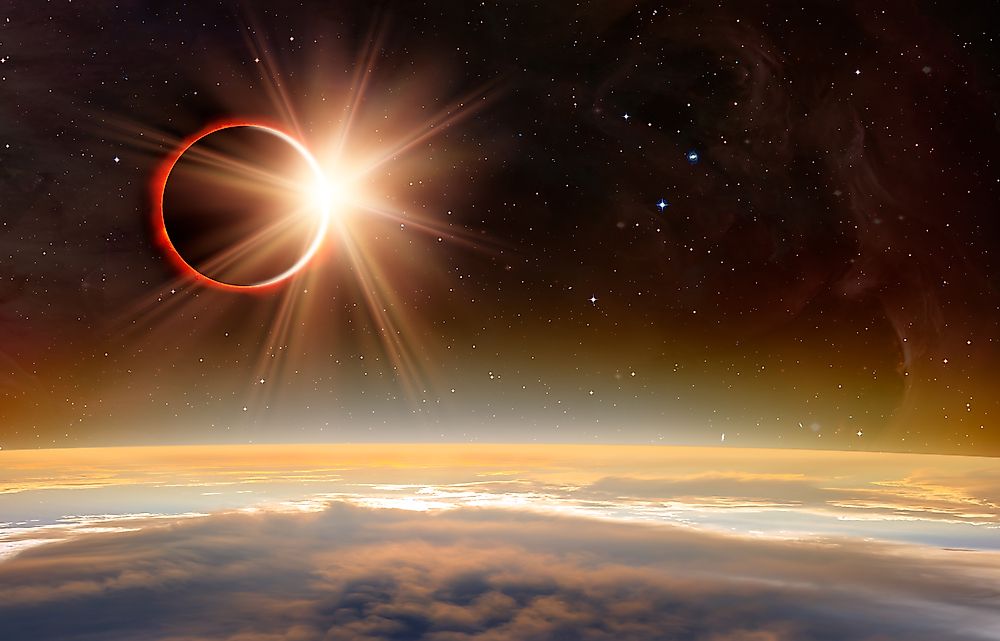What Is the Difference Between a Solar and Lunar Eclipse?

An eclipse refers to a phenomenon that happens when the light from the sun (a celestial body) is blocked completely or partially by a planet or the moon (or any other celestial body). During eclipses, the Moon, the Sun, and the Earth are in line. There are two types of eclipses from the Earth’s perspective; the solar eclipse (eclipse of the Sun) and the lunar eclipse (eclipse of the Moon).
Differences Between a Solar and Lunar Eclipse
The first difference comes from how the two occur. The solar eclipse occurs when the Moon gets in between the Sun and the Earth. The result is that the Moon casts its shadow on Earth. Consequently, the day becomes darker. A total eclipse (complete blockage of the Sun’s light) happens somewhere on Earth once every one year and a half. Partial eclipses occur somewhere on Earth at least twice a year. The lunar eclipse occurs when the Earth blocks the light of the Sun from reaching the moon. As a result, the moon appears to fade away during a full moon because it does not reflect any light. Also, the Moon may appear reddish due to refraction of light by the Earth’s atmosphere.
Secondly, the solar eclipse takes place during the day. On the other hand, the lunar eclipse takes place during the night. Furthermore, the solar eclipse takes place when there is a new moon while the lunar eclipse takes place during a full moon.
Another difference arises from the duration of both events. The solar eclipse is shorter than the lunar eclipse. The solar eclipse takes place for a period of between 7 and minutes while the solar eclipse takes at least one hour. On the subject of the frequency of occurrence, both types of eclipses have an almost similar frequency of occurrence.
Some places on Earth do not experience the solar eclipse. The reason for this is because the Earth’s shadow that is cast on the Moon during the lunar eclipse is much bigger than the shadow the Moon casts on Earth during a solar eclipse. As a result, more places and people are much likelier to experience the lunar eclipse than the solar eclipse.
During the observation of the two, there is another key difference. The human eye is capable of safely observing the lunar eclipse without protective gear for the eyes. However, the human eye cannot observe the solar eclipse continuously without suffering damage because of the dangerous rays such as x-rays that still reach the Earth.
Next Occurrences
In 2018, most of the US will experience a total lunar eclipse on January 31. The moon will appear dark orange or red. July 12 will have a partial solar eclipse that will be observed in areas between Australia and Antarctica. Another total lunar eclipse will occur on July 27 and will be visible across the eastern hemisphere and parts of South America. A partial solar eclipse will occur on August 11 in Europe and most of Africa and Asia.











